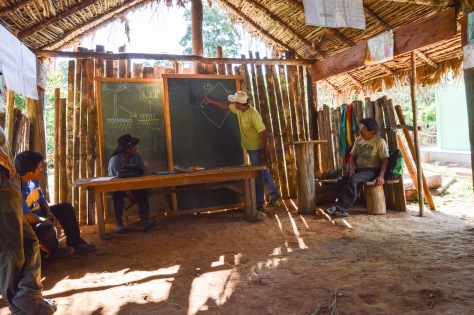
Since the start of our Forest Futures project I had been thinking about the best way to support the production of agroforests once we have left. We had committed to produce a manual but my initial thoughts were that this is a little old-fashioned and that an electronic publication formatted for mobile phones would be a good option. The reality, however, is that Bolivia has very poor internet access. Even in Cobija, the capital of the Pando, internet acesss is sporadic and poor. Once in the field it is only available at a few points along the main road . We therefore decided to opt for a printed manual, of the size that it will fit on a narrow shelf or somebody’s day pack and on high quality paper that will resist the high humidity of the tropics.
The next decision was how to best communicate to the people we working with. I believe that a majority text-based format would not be of great interest or very accessible for the communities we work with. I decided on an image-rich poster-like format. This was because posters remain a major communication tool by Government and NGOs in the region and so local people will be familiar with them, secondly I assumed that Governments and NGOs know what they are doing! Following this I had to think quite hard about content. Whilst the mechanics of establishing a plot are relatively straightforward to explain what has struck me working with rural people is that communicating the underlying principles of agroforestry as we practice it is very challenging.

This is in part because a lot of their knowledge on soils and and nutrient cycling is based on temperate systems, either in Europe or the Andes where soils are replenished by the action of frost or weathering of rock. Amazonian soils have been leached over millions of years and hold few nutrients for plants but this is not obvious looking at the lush dense forest growing on them. So not only do we need to explain that the soils are very poor but then explain how such rich forest grows on them. Similarly, it is less challenging for people living away from the Amazon to accept that cutting forest is not sustainable, but quite a different thing when it is your livelihood that depends on slash-and-burn and when you have always been surrounded by forest for as far as the eye can see and that this has been the case for as long as anyone can remember. The upshot of these considerations are a substantial introduction that attempts to explain all of the background and context whilst assuming little prior knowledge.
You can download the pdf version of the manual here. A printed version is available on request for those working in Latin America.
